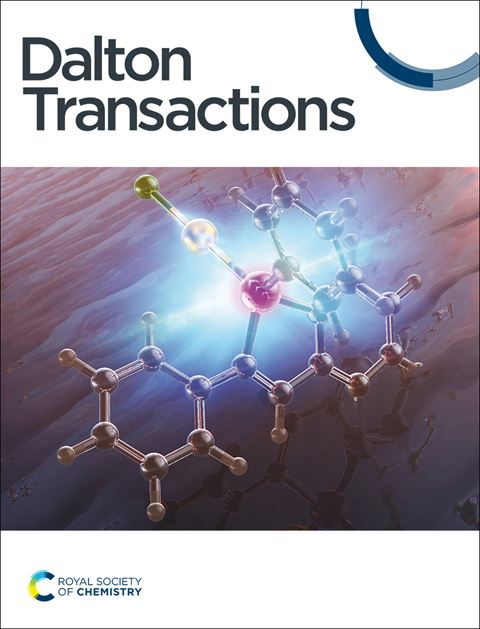Visualizing supramolecular assembly behavior, stimulus response, and solid state emission of higher-order Pt2+ aggregates
IF 3.5
3区 化学
Q2 CHEMISTRY, INORGANIC & NUCLEAR
引用次数: 0
Abstract
Here, we present the first instance of a highly efficient red tetramer aggregate with tunable emission based on a cationic platinum(II) complex in conjunction with a silver cluster anion counterpart. This system exhibits multicolor emission response behaviors, which can be conveniently and directly detected through spectroscopic analysis, showcasing intriguing luminescence changes. The self-assembly of Pt⋯, π–π, and hydrogen bonding interactions not only enables an intriguing color adjustment from green to yellow emission, and eventually to red emission, but also demonstrates the co-existence of the monomer, excimer, and aggregation. These phenomena are further accompanied by well-defined nanostructures. The self-assembly process of these structures exhibits an isodesmic growth mechanism, which is dependent on temperature. In this regard, it exhibits potential applicability in multi-mode logic gates that rely on external stimuli such as concentration, solvent, and temperature. The sensitivity of the aggregates towards chemical stimuli combined with their exceptionally bright emission characteristics renders them suitable for diverse applications including solid-state lighting sensing mechanisms and anticounterfeiting measures. The multi-stimuli responsive phosphorescence and self-assembly behaviors of the cationic platinum(II) complex were substantiated by X-ray crystal structure determination, 1H NMR analysis spectroscopic investigations, computational calculations and scanning electron microscopy (SEM) studies.

可视化高阶 Pt2+ 聚集体的超分子组装行为、刺激响应和固态发射
在这里,我们首次展示了基于阳离子铂(II)配合物与银簇阴离子对应物的、具有可调发射的高效红色四聚体聚合体。该系统呈现出多色发射响应行为,可通过光谱分析方便、直接地检测到这些响应行为,展示出引人入胜的发光变化。Pt⋯、π-π 和氢键相互作用的自组装不仅实现了从绿色发射到黄色发射,最终到红色发射的有趣颜色调整,而且还展示了单体、准分子和聚集的共存。伴随这些现象出现的还有定义明确的纳米结构。这些结构的自组装过程呈现出一种等渗生长机制,这种机制与温度有关。在这方面,它有望应用于依赖浓度、溶剂和温度等外部刺激的多模式逻辑门。聚合体对化学刺激的敏感性加上其异常明亮的发射特性,使其适用于多种应用,包括固态照明传感机制和防伪措施。通过 X 射线晶体结构测定、1H NMR 分析光谱研究、计算和扫描电子显微镜(SEM)研究,证实了阳离子铂(II)复合物的多刺激响应磷光和自组装行为。
本文章由计算机程序翻译,如有差异,请以英文原文为准。
求助全文
约1分钟内获得全文
求助全文
来源期刊

Dalton Transactions
化学-无机化学与核化学
CiteScore
6.60
自引率
7.50%
发文量
1832
审稿时长
1.5 months
期刊介绍:
Dalton Transactions is a journal for all areas of inorganic chemistry, which encompasses the organometallic, bioinorganic and materials chemistry of the elements, with applications including synthesis, catalysis, energy conversion/storage, electrical devices and medicine. Dalton Transactions welcomes high-quality, original submissions in all of these areas and more, where the advancement of knowledge in inorganic chemistry is significant.
 求助内容:
求助内容: 应助结果提醒方式:
应助结果提醒方式:


